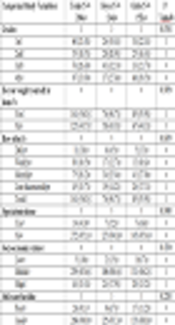Validity of Measured vs. Self-Reported Height, Weight and Body-Mass Index in Urban Croatian Adolescents
DOI:
https://doi.org/10.61838/kman.intjssh.2.1.5Keywords:
Validity, Effect, Agreement, Secondary-School Students, Croatia, DifferencesAbstract
Objectives: The aim of this research was to estimate the validity of measured and self-reported height, weight and body-mass index (BMI) in Croatian adolescents. Methods: In this cross-sectional study, participants were 286 urban secondary-school students (53% of girls) from the city of Zagreb, Croatia. To assess self-reported height, weight and sociodemographic characteristics of the participants, an in-person interview was carried out. Results: Both boys and girls underestimated weight and height. Cohen’s D effect showed that these differences were trivial. Pearson’s coefficient of correlation between self-reported and measured values ranged from 0.95 to 0.97 in both boys and girls. The prevalence of underweight was overestimated, when using personal assessment of BMI, while overweight status was underestimated by both gender. Kappa statistics showed good (0.64 in girls) and excellent (0.89 in boys) agreement between the self-reported and measured BMI. Conclusions: Our findings suggest, that there is the inaccuracy between measured and personal assessment of height and weight to determine the prevalence of overweight/obesity, especially in girls. However, self-reported height, weight and calculated BMI may be used as a valid assessment for large epidemiological studies, but not for intervention purposes.Downloads

Downloads
Published
2019-04-13
Issue
Section
Articles
How to Cite
Štefan, L., Baić, M., & Pekas, D. (2019). Validity of Measured vs. Self-Reported Height, Weight and Body-Mass Index in Urban Croatian Adolescents. International Journal of Sport Studies for Health, 2(1), 19-25. https://doi.org/10.61838/kman.intjssh.2.1.5




